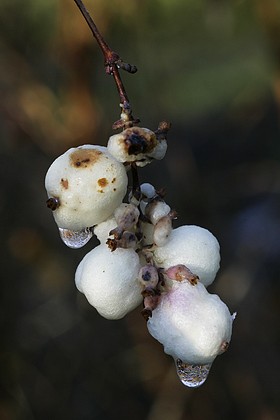Snowberry story
Photo Arne Ader
Translation Liis
Snowberry
Snowberry Harilik lumimari Symhporicarpos albus
Against a backdrop of bare branches, and in days that have become short, we notice the snow-white fruits on bare bushes of a shrub that was a popular ornamental plant decades ago.
Mostly it is an upright shrub, about a metre high, with thin light brown branches. It is so widely spread as an ornamental plant in urban as well as rural landscaping and in old parks that everyone knows the snowberry.
The shrub is a native of the shrub layer in the forests of southern Canada and northern USA, forming dense thickets there.
As for growing conditions the snowberry accepts poor soils, and the salty soils in urban areas too. It competes successfully with larger trees, growing well in partial shade as well as open sites.
In October the fruits of the snowberry ripened, with a diameter on average of one centimetre and containing 2 pits – botanically a drupe fruit.
The white, eye-catching fruits are considered slightly toxic here; the shrubs are not recommended for planting in children’s playgrounds. Interestingly, American dendrologists do not confirm the toxicity of snowberries.









